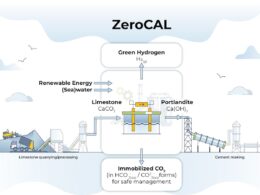US embassies and consulates, along with American citizens abroad, now have a powerful tool to protect against air pollution, as a result of a collaboration between NASA and the US State Department. Since 2020, the ZephAir tool has provided real-time air quality data for around 75 US diplomatic posts. Now, it has expanded to offer three-day air quality forecasts for PM2.5, a fine particulate matter harmful to health, for all 270 US embassies and consulates worldwide.
These tiny particles, much smaller than a grain of sand, can penetrate deep into the lungs and enter the bloodstream, causing respiratory and cardiovascular issues.
“This collaboration with NASA showcases how space-based technology can directly impact lives on the ground. This is not something the State Department could have done on its own,” said Stephanie Christel, climate adaptation and air quality monitoring programme lead with the State Department’s Greening Diplomacy Initiative.
She added, “NASA’s involvement brings not only advanced technology but also a trusted name that adds credibility and reliability to the forecasts, which is invaluable for our staff stationed abroad.”
Using NASA satellite data, computer models, and machine learning, the tool generates forecasts that help diplomatic staff manage air pollution exposure, influencing decisions from embassy ventilation systems to outdoor activities at embassy schools. In regions with severe air pollution, reliable forecasts are essential for protecting staff and their families.
“ZephAir’s new forecasting capability is a prime example of NASA’s commitment to using our data for societal benefit. Partnering with the State Department allows us to extend the reach of our air quality data, providing embassies and local communities worldwide with vital information to protect public health,” said Laura Judd, an associate programme manager for Health and Air Quality at NASA.
ZephAir previously only offered current PM2.5 levels using monitors from 75 U.S. diplomatic sites and around 50 other sources. Now, the enhanced tool provides PM2.5 forecasts for all locations, utilising the Goddard Earth Observing System forward processing (GEOS-FP) model. This model incorporates data on aerosols from NASA’s Terra and Aqua satellites, which capture particles from natural sources like dust and sea spray, as well as human activities such as burning fossil fuels. PM2.5 refers to particles or droplets 2.5 micrometers or smaller—about 30 times thinner than a human hair.
To manage air pollution exposure, the tool can assist diplomatic staff with decisions on everything from building ventilation to outdoor activities at embassy schools.
“Air quality is a top priority for my family as we think about [our next assignment], so having more information is a huge help,” said Alex Lewis, a political officer at the US embassy in Managua, Nicaragua.
Pawan Gupta, of NASA’s Goddard Space Flight Center in Greenbelt, Maryland, and the lead scientist on the project said, “We use the GEOS-FP model to generate global aerosol forecasts. Then we calibrate the forecasts for embassy locations, using historical data and machine learning techniques.”
Available since August 2024 on ZephAir’s web and mobile platforms, the forecasting tool not only protects US citizens but also contributes to global air quality awareness. The State Department engages local governments and communities to raise awareness about air pollution, integrating the forecasts into broader strategies to mitigate air pollution impacts worldwide.
The collaboration between NASA and the State Department facilitated through the Health and Air Quality Applied Sciences Team and the Satellite Needs Working Group, is set to expand ZephAir’s capabilities further, including the addition of ground-level ozone data, another harmful pollutant that affects both embassy staff and local populations.





















